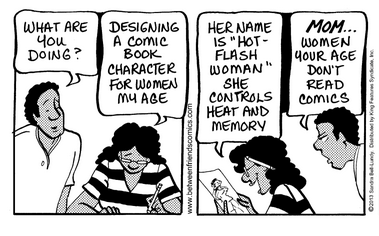Real Life Stan Mack
Skip to commentsMack rolled into New York at the dawn of JFK’s New Frontier, toting a degree from the Rhode Island School of Design and a bunch of pens. After becoming art director at the Herald Tribune, rubbing shoulders with notable proponents of an emerging “new journalism” (Breslin, Wolfe, Steinem), he moved on to the New York Times.
A few years later, accompanying Style reporter Georgia Dullea on some of her forays into “Nouvelle Society,” he began jotting down quotes along with his sketches. Georgia was encouraging and eventually a thought bubble popped over Stan’s head: “What if I combine my illustrations with what ordinary people are actually saying?” He pitched the legendary graphic designer, Milton Glaser, at the Village Voice then, on the idea and the strip was born.

In anticipation of Stan Mack’s Real Life Funnies collection being released Joe Enright interviews the cartoonist for The Red Hook Star Revue about the comic strip and his career leading up to it.
JE: Did you come up with the name “Real Life Funnies” and that tag, “All dialogue guaranteed verbatim”?
SM: No. Milton said, “Whatever you’re gonna do, go do it.” He was a visionary. So I wandered around town, I overheard snippets here and there and delivered it in a comic strip format to the editors, not Milton, who was separate from the editors who put together the paper. “Here you go,” I said, and they said, “What’s this?” I told them what I’d done and they said, “What do you mean it’s true? It’s not real, it’s a comic strip, comic strips are fiction, they always have been.” Or at least as far back as they could remember. I said, “No, no, this is all real. None of the words here are made up, these are all people’s words.” And they said, “Well, this is crazy. Who’s gonna believe that? They’re gonna open the newspaper and see a comic strip and they’re going to assume you made it up.”
… [S]o then they said, “How about if we call it Real Life Funnies?” I said alright, Real Life Funnies. Then they said, “And we’re gonna put your name in the front of it because we don’t want the responsibility for people asking us if it’s real or not.” Then one of them said, “You know, even that might not be enough. Let’s put ‘verbatim’ underneath it, to say this is absolutely people’s words.” As it turned out, the word verbatim captured readers’ imagination. It’s a nice lively punchy word and it became very much attached to the whole idea of Real Life Funnies.



Comments 2
Comments are closed.